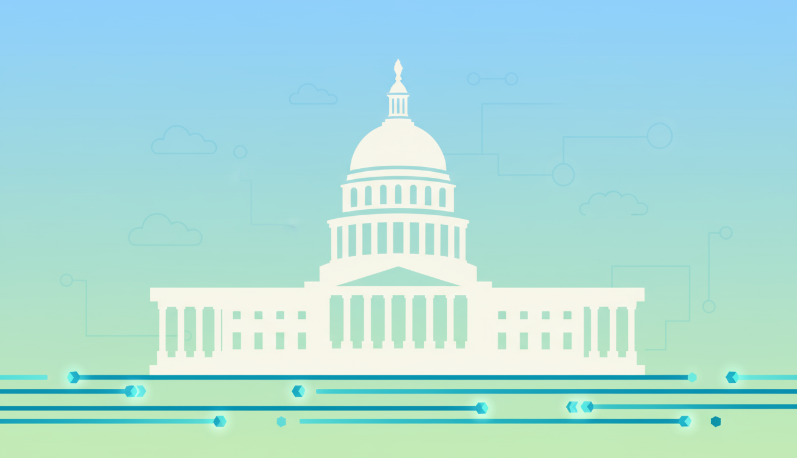Government shutdowns create immediate operational challenges that ripple through every department. When staff are furloughed and budgets freeze, the work doesn’t stop. HR still needs to process payroll. Finance teams must track spending. Logistics departments have to manage contracts and inventory. The question isn’t whether these functions matter during a shutdown. The question is how agencies can maintain them with fewer people and limited resources. The answer lies in data automation platforms that reduce manual work, maintain data quality, and speed up recovery when normal operations resume.
The Real Cost of Manual Data Processes
Most government agencies still rely heavily on manual data entry, spreadsheet management, and person-dependent workflows. These systems work fine when everyone is at their desk. During a shutdown, they fall apart quickly.
Consider what happens in a typical HR department. Employee records need updating. Benefits require processing. Time and attendance data must be collected and verified. When half the team is furloughed, these tasks pile up. The backlog grows every day. When staff return, they face weeks of catch-up work before operations normalize.
Finance departments experience similar problems. Budget tracking stops. Invoice processing slows. Financial reports go stale. According to J.P. Morgan research, the longer a shutdown lasts, the harder it becomes to restart financial operations and reconcile accounts.
Logistics teams struggle to maintain visibility into supply chains, contracts, and procurement. Manual tracking systems can’t keep up when the people managing them aren’t working. Critical information gets lost. Vendors wait for answers. Projects stall.
The Value of Automation During Crisis
Automated data platforms solve these problems by removing the dependency on constant human intervention. These systems continue collecting, validating, and organizing data even when offices are understaffed.
Think about payroll processing. An automated system pulls time and attendance data, calculates pay, processes deductions, and generates reports without manual input. When HR staff are furloughed, the system keeps running. Employees still get paid on time. Benefits continue without interruption. When the shutdown ends, there’s no backlog to clear.
The same principle applies to financial operations. Automated data integration connects accounting systems, procurement platforms, and budget tracking tools. Transactions flow automatically. Reports update in real time. Finance teams can monitor spending and maintain compliance with skeleton crews.
For logistics, automation provides continuous visibility. Contract management systems track deadlines and deliverables. Inventory systems monitor stock levels. Procurement platforms maintain vendor relationships. These functions don’t pause when people do.
Three Pillars of Resilient Data Infrastructure
Building resilience requires more than just automation. Government agencies need data platforms built on three core principles.
Curation ensures data quality remains high regardless of staffing levels. Automated validation rules catch errors before they spread through systems. Standardized data formats make information easy to find and use. When operations resume after a shutdown, teams work with clean, reliable data instead of spending weeks fixing problems.
Governance maintains security and compliance during disruptions. Access controls protect sensitive information. Audit trails track every change. Approval workflows continue functioning even with reduced staff. These safeguards prevent the chaos that often follows a shutdown when agencies discover compliance gaps or security issues.
Integration connects systems across departments and functions. HR platforms talk to finance systems. Procurement tools share data with logistics. Budget tracking connects to spending analysis. This connectivity means information flows automatically instead of requiring people to manually transfer data between systems.
Measuring Recovery Time
The difference between manual and automated systems becomes obvious when measuring recovery time. Agencies using manual processes typically need three to four weeks to return to normal operations after a shutdown. They spend this time reconciling accounts, clearing backlogs, and fixing errors that accumulated during the disruption.
Agencies with automated data platforms recover in days instead of weeks. Their systems maintained data quality during the shutdown. Backlogs are minimal. Staff can focus on strategic work instead of administrative catch-up.
| Function | Manual Process Recovery | Automated Platform Recovery |
| HR & Payroll | 3-4 weeks | 2-3 days |
| Financial Reporting | 4-6 weeks | 1 week |
| Contract Management | 2-3 weeks | 3-5 days |
| Budget Reconciliation | 4-5 weeks | 1-2 weeks |
These time savings translate directly to cost savings. Less time spent on recovery means more time delivering services. Fewer errors mean less rework. Better data quality supports better decisions.
Building for the Next Disruption
Government shutdowns aren’t the only disruptions agencies face. Natural disasters, cybersecurity incidents, and public health emergencies create similar challenges. Automated data platforms provide resilience against all these scenarios.
The investment in data engineering and automation pays dividends every day, not just during crises. Staff spend less time on repetitive tasks. Leaders get better information faster. Agencies can redirect resources toward mission-critical work.
Starting this transformation doesn’t require replacing every system at once. Most agencies begin by automating their most manual processes. HR and finance functions offer quick wins because they involve repetitive tasks with clear rules. Success in these areas builds momentum for broader changes.
Working with experienced data analytics consultants helps agencies identify the right starting points and avoid common pitfalls. The goal isn’t technology for its own sake. The goal is building systems that keep working when everything else stops.
Moving Forward with Automation
The next shutdown will happen. The timing is uncertain, but the impact is predictable. Agencies that prepare now will maintain operations while others struggle. The difference comes down to infrastructure. Manual processes fail under pressure. Automated systems keep running.
Government leaders who invest in modern data platforms aren’t just preparing for shutdowns. They’re building the foundation for better service delivery, smarter resource allocation, and more effective operations every single day.
Whether you’re looking to automate HR processes, streamline financial reporting, or improve logistics visibility, our team can help you identify quick wins and build a roadmap for long-term resilience.
Schedule a consultation with our government data experts to discuss your specific challenges and discover how automated data platforms can transform your agency’s operations.

